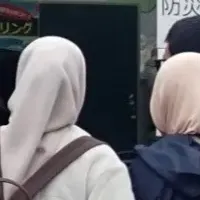
Disparities in Child Hunger Highlighted by Feeding America's Map the Meal Gap Study
Disparities in Child Hunger: Insights from Feeding America's Map the Meal Gap
Feeding America has released its annual report, the 'Map the Meal Gap,' unveiling striking discrepancies in child hunger across the United States. Nearly 20% of American children are currently living with food insecurity, a troubling statistic that rises dramatically in certain rural counties, where rates can soar to as high as 50%. This data points to a broader issue of food access, particularly where resources are limited.
The Geography of Hunger
The study highlights that while many children reside in urban centers, more than 80% of counties exhibiting the highest rates of child food insecurity belong to rural areas. This fact is particularly alarming as it indicates a disproportionate impact on vulnerable populations living outside metropolitan areas. The 'Map the Meal Gap' serves as an essential tool for both community leaders and policymakers, offering localized estimates of food insecurity along with food costs for every county and congressional district in the nation.
Over 47 million individuals, including approximately 14 million children, reported food insecurity in 2023, marking the highest numbers in nearly ten years. There is a pressing need for a collective effort to address this crisis, especially as summer approaches when children are likely to have less access to school meals. Feeding America's Chief Research and Innovation Officer, Melanie Hall, stresses the importance of community involvement in combatting hunger.
Key Findings of the 2023 Report
The 'Map the Meal Gap' study presents several important findings:
- - Food insecurity remains widespread across all U.S. counties and congressional districts, reflecting a complex interplay of socioeconomic factors.
- - Approximately 85% of the counties with the highest food insecurity levels are categorized as rural regions.
- - Regional disparities are also significant; nearly 90% of high food insecurity counties are located in the Southern United States.
- - Vulnerability to food insecurity transcends demographics, but certain groups are significantly more affected. For instance, Black and Latino individuals experience food insecurity rates that can reach as high as 60% in specific counties.
Economic Barriers and SNAP
A sobering truth highlighted by the study is that more than two in five people facing hunger do not qualify for the Supplemental Nutrition Assistance Program (SNAP) due to income thresholds. Even when individuals are eligible, participation levels in SNAP remain low.
The report also quantifies the financial strain on those experiencing food insecurity, indicating a national shortfall in the food budget of approximately $32 billion. This translates to an average additional need of $22.37 per week per person to meet basic food requirements.
The cost of meals varies considerably across the country, ranging from $2.60 to $6.09 per meal, underscoring the economic challenges faced by different communities.
Building a Nourished Future
Feeding America emphasizes the need for holistic solutions to ensure children have reliable access to nutritious food. They encourage community members to engage in ways that can help alleviate hunger, such as volunteering at local food banks, advocating for supportive policies, or making donations. The fight against hunger requires concerted action and awareness, particularly as many families continue to navigate the complexities of food insecurity.
By shining a light on these disparities through the 'Map the Meal Gap,' Feeding America seeks to inspire collective action to create a future where every child has the essential nourishment needed to thrive, learn, and grow.
As we face ongoing challenges around food access, it is crucial for communities to unite in an effort to support those in need, ensuring that no child goes hungry, especially during critical times such as the summer break.
Topics Policy & Public Interest)










【About Using Articles】
You can freely use the title and article content by linking to the page where the article is posted.
※ Images cannot be used.
【About Links】
Links are free to use.